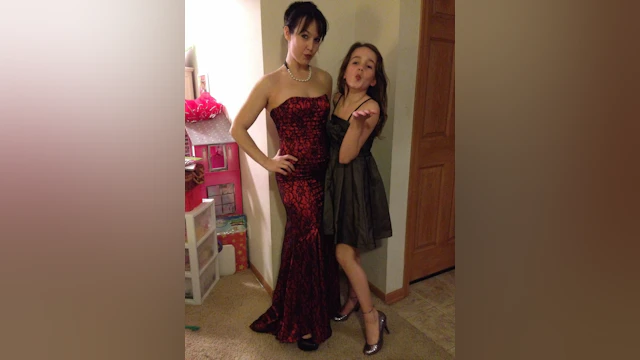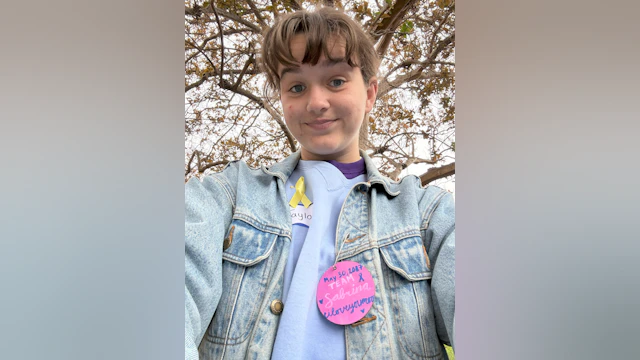International Survivors of Suicide Loss Day, also known as Survivor Day, takes place annually — but support is available for loss survivors year round. For more information, we encourage you to visit our resources page for those who have lost someone to suicide, with resources including but not limited to our Healing Conversations program and Living With Suicide Loss video series.

This past November, I attended my very first Survivor Day event, seven years after losing my mom to suicide. For those who don't know, International Survivors of Suicide Loss Day, also known as Survivor Day, is an annual day of recognition for those who have survived a suicide loss. On this day, thousands of people gather at events across the world to find hope and healing, and to connect with a community of people who understand.
Since losing my mom, I’ve participated in many of the American Foundation for Suicide Prevention’s Out of the Darkness Walks, which gather hundreds of thousands of participants each year to help raise awareness and funds for suicide prevention. The Walks hold a special place in my heart, but Survivor Day was a completely different experience. Survivor Day wasn’t for my mom. It wasn’t for anyone else. It was just for me. For the first time, I didn’t feel like I had to be strong for anyone. I didn’t feel like I had to carry anyone else’s grief. I could simply be present with my own. I could grieve, heal, and share my feelings without guilt.
The night before Survivor Day, I journaled a list of intentions for the event. Every Survivor Day event is different. This one happened to be held at a North Hollywood church that was driving distance from the University of Southern California (USC), where I'm an undergraduate student. My intentions were to heal, to share my truth, to connect with others who understood the unique pain of losing a parent to suicide, and most importantly, to allow myself to feel whatever emotions came up. I knew this event would be difficult, especially since the last time I had been in a church was for my father’s funeral, after I lost him to heart failure. Prior to that, the last time I had been in a church was for my grandfather's funeral. But my intentions, and the community I found once I arrived, helped ground me throughout the day.

Everyone at the event knew the deep pain of losing someone close to them to suicide. You could even identify what type of loss people had experienced by the colored ribbons participants wore. Each color represented a specific type of loss — a parent, child, sibling, partner, or friend — and created an immediate sense of understanding and connection. It was a quiet acknowledgment that, even in our shared grief, we aren’t alone.
An event itinerary was sent out beforehand, so I was able to prepare myself a bit for the afternoon ahead. The day started with panel discussions among people who had lost loved ones to suicide, followed by a documentary screening that illustrated how life can look and feel after a suicide loss. There was one moment in the documentary that particularly resonated with me, in which a woman spoke about missing her mother but also feeling angry, especially during huge life milestones. Experiencing important life moments without a loved one, and especially without a parent, sucks. It makes you sad and angry, and sometimes jealous. I can get so upset when I see other young people with their parents, regardless of whether they're happy or sad in that moment. I'm 22 now, and about to graduate college. I wish more than anything that my mom could be there with me when I do, and for all the major turning points in my life to come.
After the initial panel discussions and documentary screening, this Survivor Day event’s participants were encouraged to explore a number of themed rooms, like the Hope Room and the Joy Room. I was struck by the idea behind the different rooms, which were designed to hold space for people searching for something in their healing journey. It made me think about the incredible power of naming things, and how it can shape the way we experience them. Maybe there was something to be learned from those rooms: the idea that even in a place tied to so much sorrow, there could be hope and joy waiting somewhere within. I realized that even though I have experienced a lot of negative emotions in churches, I could still have a healing experience in that setting.
For me, the most profound room was the one in which I was brought together with other people who had lost a parent to suicide. During this group breakout session, we introduced ourselves and talked about the person we lost to suicide, as well as when we lost them. Everyone was at different stages in their healing process, but what we all had in common was a great love for the person we lost.
That day, I allowed myself to embrace the truth: I am a Survivor. A survivor of suicide loss, but also a survivor of the pain, guilt, and unanswered questions that come with it. A survivor of the nights spent wondering "what if" and the days filled with a hollow ache for my mom who is no longer here. A survivor of the stigma, the silence, and the struggle to find meaning in the midst of unimaginable loss. A survivor of learning to carry grief while still seeking joy; to hold on to love while letting go of blame; and to honor a life while continuing to live my own. I owe it to myself to take it moment by moment. That day, I was reminded that I need to give myself as much grace and empathy as I give others.

Throughout the event, there were a few moments when I needed to step out of conversations because my emotions got to be too overwhelming. I walked out of the sanctuary and sat down, found the colors of the rainbow in the scenery around me, and remembered the intentions I had set the night before. I decided to allow myself to embrace whatever emotions came up. Suddenly, my grief felt a little lighter. When you let yourself cry, it can be a relief. The tears I cried that day felt like years of pent-up sorrow I had never had a chance to let go.
Survivor Day gave me a space to recognize that this journey is just as much about loving and honoring those we’ve lost to suicide as it is about finding ways to carry ourselves forward, through our grief, toward healing.